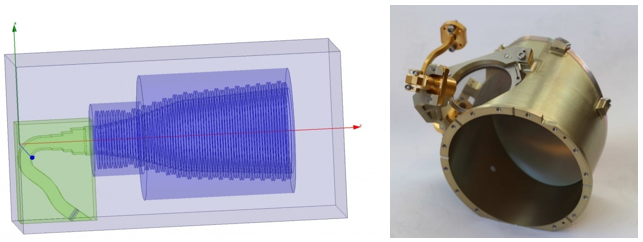First light for TROPICS Pathfinder satellite using advanced feedhorn antennas designed by Prof. Graham Smith
NASA’s Time-Resolved Observations of Precipitation structure and storm Intensity with a Constellation of Smallsats (TROPICS) mission will be a constellation of 6 CubeSats due to be launched in 2022. The mission objective is to provide rapid-refresh microwave measurements over the tropics that can be used to observe the thermodynamics of the troposphere and precipitation structure for storm systems at the mesoscale and synoptic scale over the entire storm lifecycle.
Each satellite will carry a quad-band radiometer operating at 90, 118.75, 183 and 206 GHz. The two pairs of dual-band feedhorn antennas for TROPICS were designed by Prof. Graham Smith and manufactured by Thomas Keating Ltd. for MIT Lincoln Lab which leads the mission. The design was particularly demanding in order to meet the quad-band requirements and the space constraints of having to fit into a 1U CubeSat envelope of 10x10x10 cm. The paper describing the antenna design can be found here https://ieeexplore.ieee.org/document/8608857
A single Pathfinder satellite was launched on June 30th 2021 and is now gathering initial data on tropicl storms and hurricanes. One of its first targets was Hurricane Ida which hit the Gulf of Mexico in late August. News of the mission can be found on the MIT Lincoln Lab pages here
https://tropics.ll.mit.edu/CMS/tropics/latest-news-and-updates
and first light microwave imagery from Pathfinder can be seen on the Nasa website here

Fig. 1 (left) shows a CAD model of one of the dual-band antenna feeds designed by Prof. Graham Smith and (right) shows the whole feed and reflector assembly fabricated by Thomas Keating Ltd.

Fig. 2 shows first light imagery from the 205 GHz channel of the TROPICS Pathfinder satellite of Hurricane Ida before, during and after landfall in August 2021 (courtesy of NASA/MIT LL).